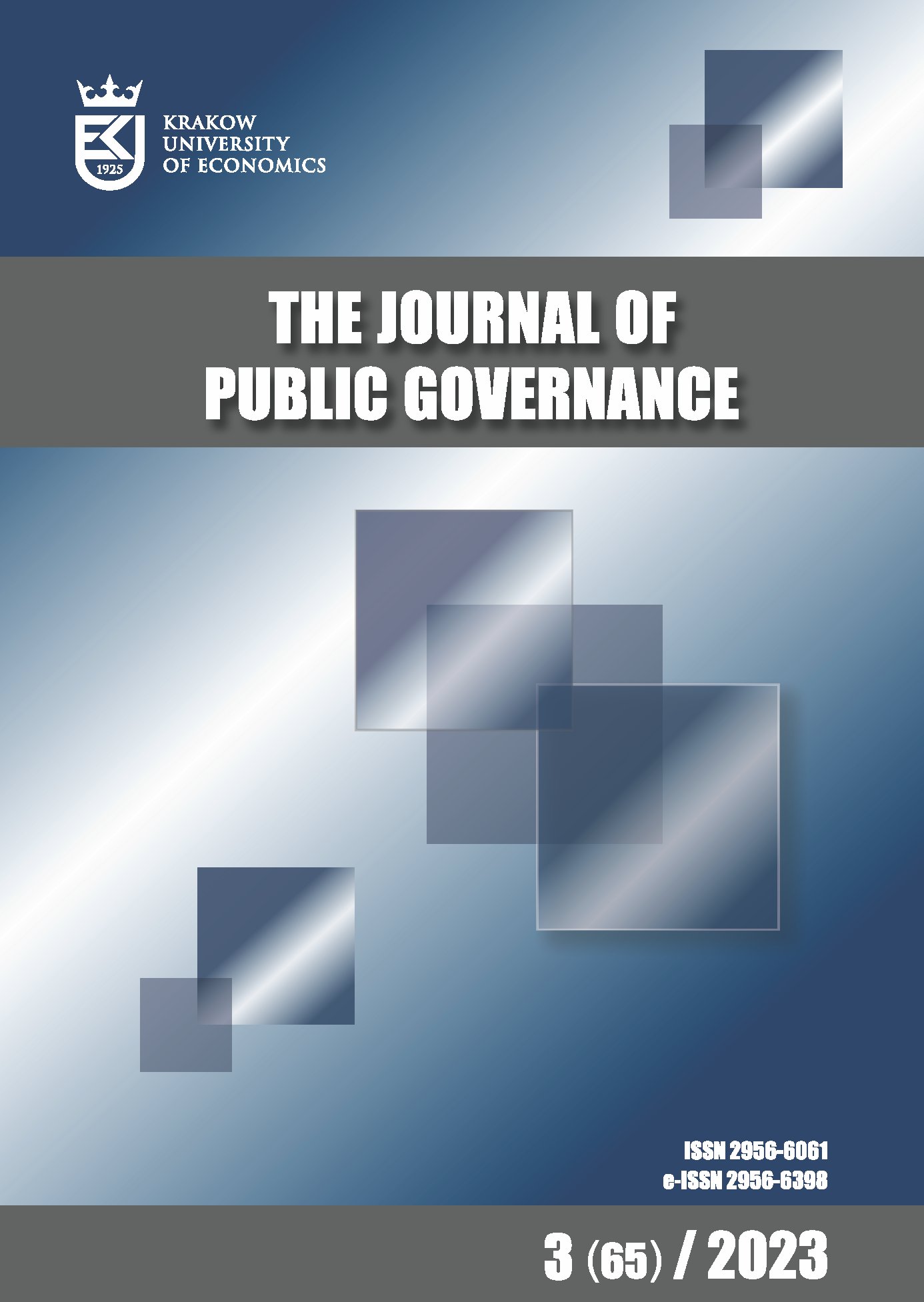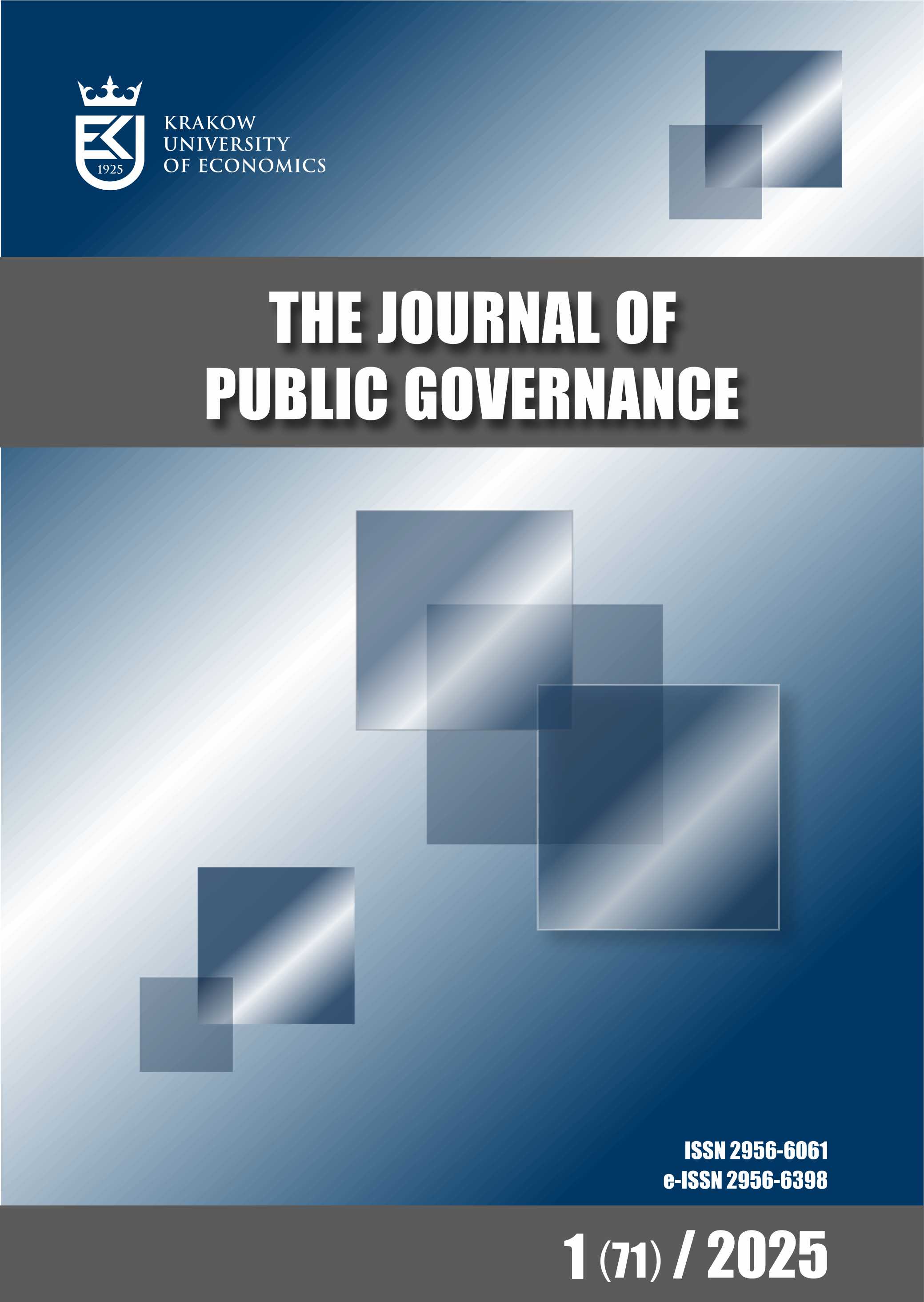New Technologies in Humanitarian Logistics
DOI:
https://doi.org/10.15678/PG.2023.65.3.04Keywords:
humanitarian relief situations, revolution 4.0, new technologies, humanitarian logistics, business modelsAbstract
Objective: The aim of the article is to present new technologies and the possibilities of their implementation by entities involved in the implementation of logistics activities (humanitarian logistics).
Research Design & Methods: To achieve the assumed goal, the method of analysing literature in the area of humanitarian logistics and new technologies related to the so-called digital revolution is used. Based on a literature review, general considerations on humanitarian logistics were related to the needs of business models of entities carrying out humanitarian aid activities in the implementation of new technologies.
Findings: The article outlines the role and importance of new technologies in humanitarian logistics, which is an interesting and prospective research area. All presented examples of new technologies that are used in humanitarian logistics are extremely important for the easy, fast, and effective flow of information, finances, and supplies with humanitarian aid. The key to success is appropriate use of technology while ensuring the security of humanitarian supply chains.
Implications / Recommendations: There is a need to deepen research in the field of humanitarian logistics, because identifying needs and barriers in the implementation of humanitarian logistics processes can significantly streamline and improve the effectiveness of humanitarian supply chains.
Contribution / Value Added: The article shows that the role of new technologies treated as support for aid activities in humanitarian actions is the ability to quickly obtain and disseminate information that guarantees the effectiveness and efficiency of the undertaken actions. New technologies are an element of new business models of organisations involved in humanitarian aid.
Article classification: theoretical/review paper
Downloads
References
Drony w akcji… (2018). Drony w akcji… humanitarnej. Available at: https://publicystyka.ngo.pl/dronyw-akcji-humanitarnej [accessed: 07.09.2023].
European Commission (2021). Communication from the Commission to the European Parliament and the Council on the EU`s humanitarian action: New challenges, same principles, COM (2021) 110 final. Available at: https://ec.europa.eu/echo/files/aid/hacommunication2021.pdf [accessed: 07.09.2023].
Hajder, M., Nycz, M., & Jasiura, L. (2014). Katastrofy naturalne i technologiczne. Wyższa Szkoła Informatyki i Zarządzania z siedzibą w Rzeszowie.
IT.integro (2023). Co to jest chmura obliczeniowa? Available at: It.integro.pl [accessed: 07.09.2023].
Jaroszyński, J. (2011), Zarządzanie logistyczne w akcjach humanitarnych. In J. Szołtysek & B. Detyna (Eds.), Logistyka. Współczesne wyzwania (pp.196–201). Wydawnictwo Uczelniane PWSZ im. Angelusa Silesiusa w Wałbrzychu.
John, L., Ramesh, A., & Sridharan, R. (2012). Humanitarian supply chain management: A critical review. International Journal of Services and Operations Management, 13(4), 498–524.
Kolenda, P. (Ed.). (2016). Internet rzeczy w Polsce – Raport. IAB Polska. Available at: https://www.iab.org.pl/wp-content/uploads/2016/05/Raport-Internet-Rzeczy-w-Polsce.pdf [accessed: 07.09.2023].
Lawry-White, S., Fenton, G., Forbes, & Hale, S. (2019). Evaluation of Humanitarian Logistics within EU Civil Protection and Humanitarian Action, 2013–2017. Final report. Directorate-General for European Civil Protection and Humanitarian Aid Operations (ECHO). Publications Office of the EU. Available at: https://data.europa.eu/doi/10.2795/673639 [accessed: 07.09.2023].
Łupicka, A. (2011). Logistyka akcji humanitarnych jako jeden z procesów zarządzania ryzykiem w łańcuchu dostaw. In J. Witkowski & A. Baraniecka (Eds.), Strategie i logistyka w sektorze usług. Logistyka w nietypowych zastosowaniach (pp. 257– 269). Wydawnictwo Uniwersytetu Ekonomicznego.
Marcinkowska, D. (2023). Analiza komparatywna komercyjnego i humanitarnego łańcucha dostaw. Zarządzanie i Jakość, 5(1), 64–82.
Marcinkowski, J. M. (2019). Humanitarny łańcuch dostaw w sytuacji wystąpienia katastrof naturalnych na przykładzie ugrupowania regionalnego ASEAN. Wydawnictwo Uniwersytetu Ekonomicznego we Wrocławiu.
Mazur, J. (2017). Wpływ technologii na pole pomocy humanitarnej. Przegląd inicjatyw. Working Paper DELab UW, 1, Digital Economy Lab.
Nonprofit Tech for Good (2019). Global NGO Technology Report 2019. Available at: https://assets-global.website-files.com/5da60733afec9db1fb998273/5de8285d137d82cb7d96674e_2019-Tech-Report-English.
pdf [accessed: 07.09.2023].
PAHO (2001). Humanitarian Supply Management and Logistics in the Health Sector. Pan American Health Organization. Available at: https://www.eird.org/isdr-biblio/PDF/Humanitarian%20supply%20management.pdf [accessed: 07.09.2023].
Płaczek, E. (2018). Logistyka w erze Industry 4.0. Przedsiębiorczość i Zarządzanie, 19(11/3/I), 55–66.
Pokusa, T. (2022). Logistyka humanitarna jako społeczne wyzwanie współczesnych czasów. Gospodarka Materiałowa i Logistyka, (5), 14–22. DOI: 10.33226/1231-2037.2022.5.2
Ramezanian, R., & Ghorbani, M. (2020). Stochastic optimization for the carrier selection problem in humanitarian relief. Scientica Iranica, 29(5), 2710–2727. DOI:10.24200/SCI.2020.55161.4100
Słownik języka polskiego PWN (2023). Available at: https://sjp.pwn.pl/szukaj/katastrofa.html [accessed: 07.09.2023].
Szołtysek, J. (2010). Uwarunkowania i zadania logistyki akcji humanitarnych – tradycyjne zasady i nowe wyzwania logistyki. In I. Bonk (Ed.), Logistyka w naukach o zarządzaniu. Kięga poświęcona pamięci profesora Mariana Sołtysika (pp. 138–156). Wydawnictwo Akademii Ekonomicznej im. Karola Adamieckiego.
United Nations International Strategy for Disaster Reduction (2009). UNISDR Terminology on Disaster Risk Reduction. United Nations Organization. Available at: https://www.undp.org/sites/g/files/zskgke326/files/migration/ge/GE_isdr_terminology_2009_eng.pdf [accessed: 07.09.2023].
Downloads
Published
Issue
Section
License
Copyright (c) 2023 Krakow University of Economic

This work is licensed under a Creative Commons Attribution 4.0 International License.



